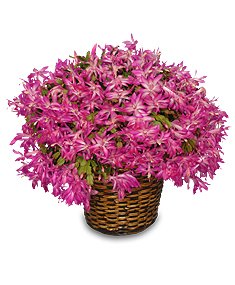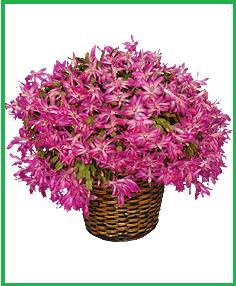Ask The Expert:
“I have had this Christmas cactus for 15 years, it’s bloomed once. What am I doing wrong?” – Elizabeth
 Flower Shop Network Plant Expert Reply:
Flower Shop Network Plant Expert Reply:
Elizabeth,
While you may think that temperature is a factor in blooming, daylight length is actually the key. Christmas cacti are triggered to bloom during short days. This can be achieved by placing the plant in a dark bedroom or by covering the plant for 15 or more hours a day. It may take up to a month to trigger the plant to produce bloom buds, but once the buds appear the plant can be returned to its usual viewing location. Remember to avoid extreme temperatures that would hinder bud release.
Click for more information on the Christmas Cactus.


 Find Your
Find Your 



 to the neck in a well-drained soil mixture. Keep the soil evenly moist. Or place them in a shallow dish which is filled with gravel to support the bulbs. Keep the dish full of water. Start them off in a dark, cool spot until they begin to sprout.
to the neck in a well-drained soil mixture. Keep the soil evenly moist. Or place them in a shallow dish which is filled with gravel to support the bulbs. Keep the dish full of water. Start them off in a dark, cool spot until they begin to sprout.